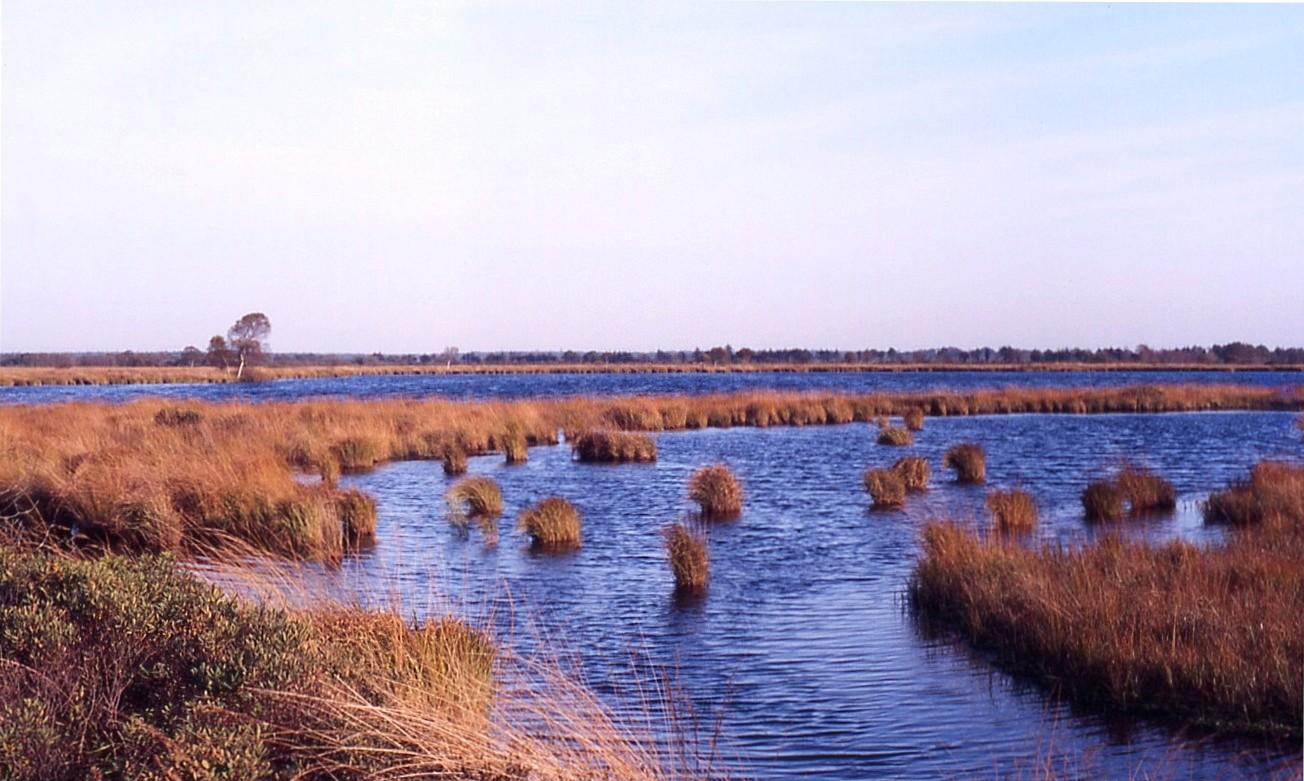Bog pond on:
[Wikipedia]
[Google]
[Amazon]
 A bog pond (german: Moorauge) is a waterbody in the middle of a raised or
A bog pond (german: Moorauge) is a waterbody in the middle of a raised or
 A bog pond (german: Moorauge) is a waterbody in the middle of a raised or
A bog pond (german: Moorauge) is a waterbody in the middle of a raised or kettle bog
A kettle (also known as a kettle lake, kettle hole, or pothole) is a depression/hole in an outwash plain formed by retreating glaciers or draining floodwaters. The kettles are formed as a result of blocks of dead ice left behind by retreating gl ...
, formerly also in percolating mire
A mire, peatland, or quagmire is a wetland area dominated by living peat-forming plants. Mires arise because of incomplete decomposition of organic matter, usually litter from vegetation, due to water-logging and subsequent anoxia. All types ...
s (''Durchströmungsmooren''). It is also called a bog pool, bog eye, raised bog kolk, bog kolk or just kolk.
Bog ponds owe their existence to the growth of the bog body and are thus of biogenic origin.
Brown bog ponds are surrounded by peat and receive their water exclusively from precipitation or from the large rain storage capacity of raised bogs. Such kolks generally represent the non-evaporating excess water of a bog. The central waterbody of these bogs exhibit almost no sedimentation
Sedimentation is the deposition of sediments. It takes place when particles in suspension settle out of the fluid in which they are entrained and come to rest against a barrier. This is due to their motion through the fluid in response to the ...
.
The accumulation of nutrients can lead to the formation of floating mat
A floating mat (german: Schwingrasen) is a layer of mosses and other, especially stoloniferous, plants that grows out from the shore across the surface of a lake or pond. This type of habitat is protected and is designated in the European Habitat ...
s. Their vegetation differs from that of other structures in the bog. Usually the edges of the kolk are more nutrient-rich as a result of mineralisation processes caused by wave and wind action. Here, woody plants such as downy birch
''Betula pubescens'' (syn. ''Betula alba''), commonly known as downy birch and also as moor birch, white birch, European white birch or hairy birch, is a species of deciduous tree, native and abundant throughout northern Europe and northern Asia ...
(''Betula pubescens'') and other species of plant e.g. purple moor grass
''Molinia caerulea'', known by the common name purple moor-grass, is a species of grass that is native to Europe, west Asia, and north Africa. It grows in locations from the lowlands up to in the Alps. Like most grasses, it grows best in acid so ...
(''Molinia caerulea'') may establish that otherwise are missing on the central areas of intact bogs. The bog water is brown, nutrient-poor, humic acid Humic substances (HS) are organic compounds that are important components of humus, the major organic fraction of soil, peat, and coal (and also a constituent of many upland streams, dystrophic lakes, and ocean water). For a long era in the 19th an ...
rich and lime-free (dystrophic
Dystrophic lakes, also known as humic lakes, are lakes that contain high amounts of humic substances and organic acids. The presence of these substances causes the water to be brown in colour and have a generally low pH of around 4.0-6.0. Due t ...
).
Literature
* Fritz Overbeck: ''Botanisch-geologische Moorkunde. Unter besonderer Berücksichtigung der Moore Nordwestdeutschlands als Quellen zur Vegetations-, Klima- und Siedlungsgeschichte.'' Wachholtz, Neumunster, 1975, . *Michael Succow
Michael Succow (born 21 April 1941 in Lüdersdorf near Bad Freienwalde)Vita
PDF, 171 kB, provided by Deutsche Bundes ...
, Lebrecht Jeschke: ''Moore in der Landschaft. Entstehung, Haushalt, Lebewelt, Verbreitung, Nutzung und Erhaltung der Moore.'' 2nd edn., Deutsch, Thun etc., 1990, {{ISBN, 3-87144-954-7.
Bogs
Hydrogeology
PDF, 171 kB, provided by Deutsche Bundes ...